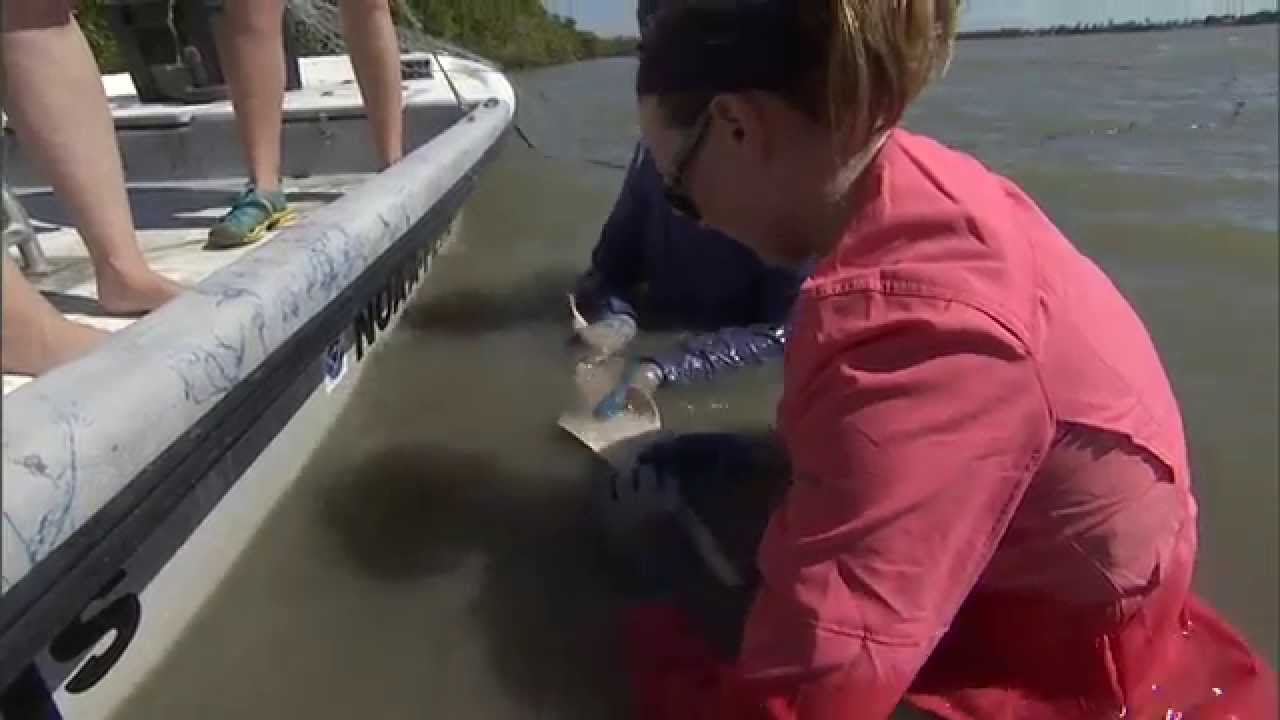My heels were raw from swimming nearly a mile burdened with a heavy camera, a thick wetsuit and an annoying current. Zig-zagging back and forth along the contours of the deep reef compounded the misery. From time to time my safety diver and I exchanged brief glances and kept kicking. After an hour I had a migraine. I love diving, but this was too much.
The private charter I was on cost me a pretty penny, and it was starting to look like an expensive debacle. I’d recently had quite a few such flops, and my unrestrained optimism was taking a hit. Second thoughts flooded my conscience. What fool hires a boat and crew for a sawfish charter? I didn’t know it at the time, but Adam, 20 feet to my right, was even more apprehensive. He had seen five of the critically endangered fish just two days earlier on the same reef and assured me that our chances of finding them again were excellent.
I had given up hope when suddenly, at the end of our underwater marathon, Adam’s wild gesticulations jolted me. I followed his gaze, and 60 feet below us rested three massive smalltooth sawfish. They faced the current, with their saws (known as rostrums) slightly elevated. One had a ball of monofilament fishing line, which resembled a dirty little pompom, on the tip of its rostrum.
Adam quickly deployed a safety sausage so the boat captain could note our location on the GPS, and I dived down to nearly 80 feet to take my first photographs. Between 13 and 16 feet long with flattened bodies and fins, they resembled giant airliners on the tarmac. I reached the bottom up-current from their spot in a depression and drifted into the first of several jaw-dropping encounters. My initial images were documentary in nature — nothing to write home about — but the three dives later that day (and a few more on a subsequent charter) delivered big time. Every penny, calorie, cramp, blister and dose of ibuprofen was worth it.
We had accomplished the hard part: finding the sawfish on an enormous silty reef offshore of Florida’s Treasure Coast. For the rest of the day all we had to do was return to our marked spot and descend. I could hardly believe all this action, wonder and discovery was less than 30 miles from my house. Exploration truly begins at our doorstep.
Smalltooth sawfish (Pristis pectinata) are one of the most peculiar subjects I’ve ever photographed. They’re a bridge to a distant past, some 56 million years ago, when the Earth was a very different place. Their rostrums — lined with sharp, modified scales (not teeth) called dermal denticles — are used for hunting baitfish on the muddy seabed and unfortunately for decorating countless bars, restaurants and homes in Florida and elsewhere. I spend a lot of time in the Everglades and often see signs at remote boat ramps requesting that anglers release sawfish unharmed and not hack off their saws when they catch these fish accidentally. It is a little depressing that people still need to be told this.
During my dives I could occasionally fill the frame of my fisheye lens with one of these dinosaurs. Other times they were skittish and moved off, just out of reach, which in a way was also good, as it allowed me to enjoy the moment. I was left with the impression that sawfish are shy, quiet creatures, and that two people swimming slowly around them, positioning for photos, was about as much as they would tolerate. I photographed several lying in formation — a first, according to a scientist — and also succeeded in choreographing a difficult shot of my buddy swimming alongside a huge 17-foot-long pregnant female. She would eventually give birth in a remote estuary to live young, and the babies, when delivered, would have a gel-like substance covering their flexible little rostrums to keep them from injuring their mother. The little sawfish prefer shallow water, while the adults venture into deeper neighborhoods. These poorly studied creatures even venture into freshwater rivers in many parts of their range.
The smalltooth sawfish once ranged from New York to Texas along the eastern seaboard of the United States, but coastal development (which is especially detrimental to the young) and unsustainable harvest (for food and trophies) reduced their numbers to less than 5 percent of what they had been. One hundred years ago these animals were widespread in Florida and especially common in the Indian River Lagoon. There are old reports of fishermen catching as many as 300 in a single season there. But by the 1980s scientists weren’t finding any there or in many other traditional hotspots. The International Union for Conservation of Nature (IUCN) lists the smalltooth sawfish as critically endangered.
Sawfish technically are rays and belong to the Pristidae family. The world’s other sawfish species aren’t faring well. Making their primary residence in shallow, murky and brackish habitats near shore, they all have dramatically declined in number for the same reasons as the American sawfish population. Adding insult to injury, fishermen target them for the fin trade.
Most smalltooth sawfish live in Florida, especially in the maze of murky and remote channels in the Everglades. In 2003 the smalltooth became the first marine fish to receive protection under the Endangered Species Act. The International Union for Conservation of Nature (IUCN) lists them as critically endangered. Of all the sawfish species, it’s probably the one with the best chance of recovery, given the protections in place. Recovery will take time though — maybe 100 years or more, according to experts such as the National Oceanic and Atmospheric Administration (NOAA). But recovery is an important and righteous goal, and sawfish are one of the most fascinating animals a diver will ever see.
Explore More
| © Alert Diver — Q3 2017 |

